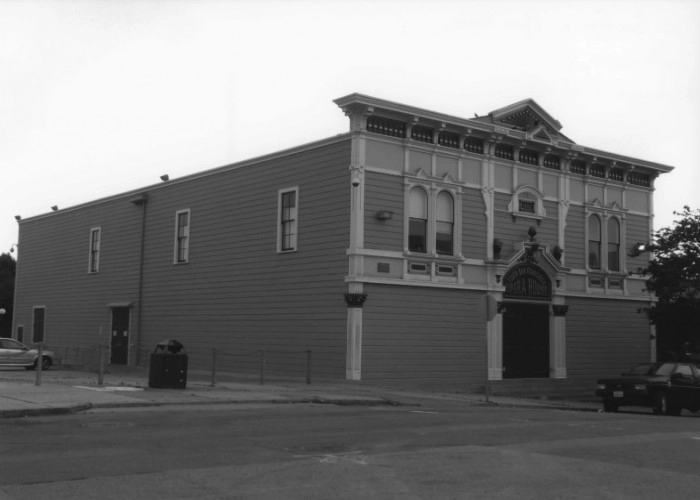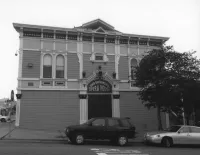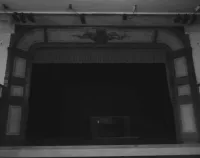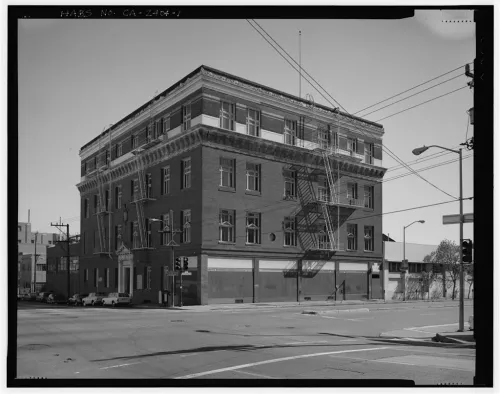Share what you know,
and discover more.
Share what you know,
and discover more.
Mar 21, 2011

-

- Charmaine Bantugan
South San Francisco Opera House (Lanza House) - National Register of Historic Places
Statement of Significance The South San Francisco Opera House possesses both historical and architectural significance. Now known as the Bayview Opera House, it appears to be eligible for the National Register of Historic Places at the local level of significance under Criteria A and C. The South San Francisco Opera House appears eligible for the National Register at the local level of significance under Criterion A within the context of the early social and cultural development of the Bayview-Hunters Point district, then known as South San Francisco. Built in 1888 by South San Francisco Masonic Lodge No. 212 in tandem with their adjacent Masonic Temple, the building served as a public social hall for gatherings, cultural events and entertainment. The Opera House was the first cultural building constructed in the neighborhood and served for decades as the chief social center of the Bayview-Hunters Point district, regularly hosting dances, fairs, political rallies, and charity benefits. As one of the few entertainment venues located outside the downtown area, the Opera House also offered a wide variety of theatrical performances -including dramas, comedies, minstrelsy and vaudeville - in its first two decades of existence. It retains its original use as a community center and performance venue, and remains among the oldest surviving entertainment venues in San Francisco. The South San Francisco Opera House also appears eligible for the National Register at the local level of significance under Criterion C within the context of architect Henry Geilfuss' career. One of San Francisco’s most prolific architects during the 1880s and 1890s, Geilfuss blended Italianate, Gothic, Eastlake, and Stick elements into a style that came to define Victorian architecture in San Francisco. The South San Francisco Opera House, which was built at the height of Geilfuss’ career, is representative of his style and craftsmanship, and is particularly notable as a rare, non-residential example of Geilfuss’ work. The South San Francisco Opera House’s period of significance extends from 1888, its date of construction, until 1965, when the building was sold by the Masons. From 1888 to 1965, the building was operated and maintained by the Masons and served as a performance space and gathering hall for the Lodge and the community at large. Though aspects of the building have been modified (see section 7 above), the South San Francisco Opera House retains sufficient integrity to convey its significance under both Criteria A and C of the National Register of Historic Places.
South San Francisco Opera House (Lanza House) - National Register of Historic Places
Statement of Significance The South San Francisco Opera House possesses both historical and architectural significance. Now known as the Bayview Opera House, it appears to be eligible for the National Register of Historic Places at the local level of significance under Criteria A and C. The South San Francisco Opera House appears eligible for the National Register at the local level of significance under Criterion A within the context of the early social and cultural development of the Bayview-Hunters Point district, then known as South San Francisco. Built in 1888 by South San Francisco Masonic Lodge No. 212 in tandem with their adjacent Masonic Temple, the building served as a public social hall for gatherings, cultural events and entertainment. The Opera House was the first cultural building constructed in the neighborhood and served for decades as the chief social center of the Bayview-Hunters Point district, regularly hosting dances, fairs, political rallies, and charity benefits. As one of the few entertainment venues located outside the downtown area, the Opera House also offered a wide variety of theatrical performances -including dramas, comedies, minstrelsy and vaudeville - in its first two decades of existence. It retains its original use as a community center and performance venue, and remains among the oldest surviving entertainment venues in San Francisco. The South San Francisco Opera House also appears eligible for the National Register at the local level of significance under Criterion C within the context of architect Henry Geilfuss' career. One of San Francisco’s most prolific architects during the 1880s and 1890s, Geilfuss blended Italianate, Gothic, Eastlake, and Stick elements into a style that came to define Victorian architecture in San Francisco. The South San Francisco Opera House, which was built at the height of Geilfuss’ career, is representative of his style and craftsmanship, and is particularly notable as a rare, non-residential example of Geilfuss’ work. The South San Francisco Opera House’s period of significance extends from 1888, its date of construction, until 1965, when the building was sold by the Masons. From 1888 to 1965, the building was operated and maintained by the Masons and served as a performance space and gathering hall for the Lodge and the community at large. Though aspects of the building have been modified (see section 7 above), the South San Francisco Opera House retains sufficient integrity to convey its significance under both Criteria A and C of the National Register of Historic Places.
Mar 21, 2011
South San Francisco Opera House (Lanza House) - National Register of Historic Places
Statement of SignificanceThe South San Francisco Opera House possesses both historical and architectural significance. Now known as the Bayview Opera House, it appears to be eligible for the National Register of Historic Places at the local level of significance under Criteria A and C.
The South San Francisco Opera House appears eligible for the National Register at the local level of significance under Criterion A within the context of the early social and cultural development of the Bayview-Hunters Point district, then known as South San Francisco. Built in 1888 by South San Francisco Masonic Lodge No. 212 in tandem with their adjacent Masonic Temple, the building served as a public social hall for gatherings, cultural events and entertainment. The Opera House was the first cultural building constructed in the neighborhood and served for decades as the chief social center of the Bayview-Hunters Point district, regularly hosting dances, fairs, political rallies, and charity benefits. As one of the few entertainment venues located outside the downtown area, the Opera House also offered a wide variety of theatrical performances -including dramas, comedies, minstrelsy and vaudeville - in its first two decades of existence. It retains its original use as a community center and performance venue, and remains among the oldest surviving entertainment venues in San Francisco.
The South San Francisco Opera House also appears eligible for the National Register at the local level of significance under Criterion C within the context of architect Henry Geilfuss' career. One of San Francisco’s most prolific architects during the 1880s and 1890s, Geilfuss blended Italianate, Gothic, Eastlake, and Stick elements into a style that came to define Victorian architecture in San Francisco. The South San Francisco Opera House, which was built at the height of Geilfuss’ career, is representative of his style and craftsmanship, and is particularly notable as a rare, non-residential example of Geilfuss’ work.
The South San Francisco Opera House’s period of significance extends from 1888, its date of construction, until 1965, when the building was sold by the Masons. From 1888 to 1965, the building was operated and maintained by the Masons and served as a performance space and gathering hall for the Lodge and the community at large. Though aspects of the building have been modified (see section 7 above), the South San Francisco Opera House retains sufficient integrity to convey its significance under both Criteria A and C of the National Register of Historic Places.
Posted Date
Apr 12, 2022
Historical Record Date
Mar 21, 2011
Source Name
United States Department of Interior - National Park Service
Source Website
Delete Story
Are you sure you want to delete this story?



















